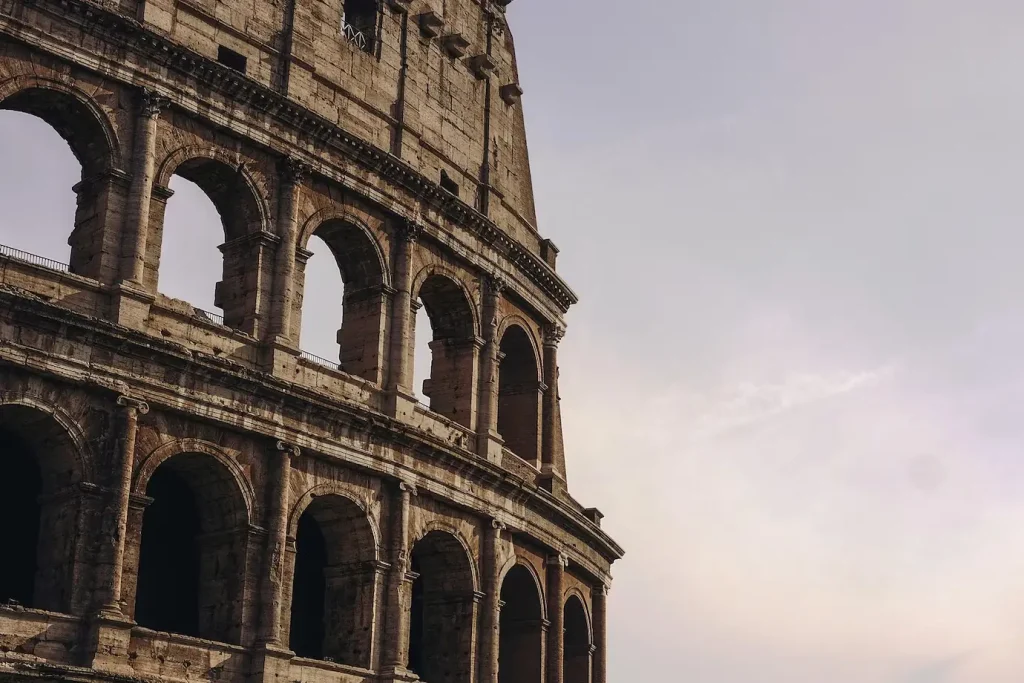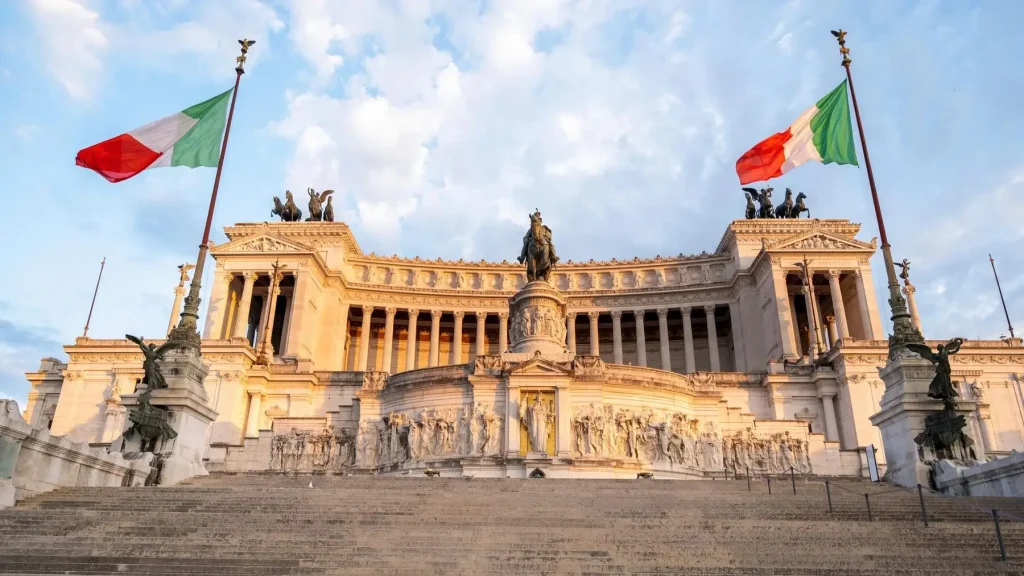Considering the political instability in the USA and heavy tax rates, many Americans think about moving abroad, and over 15,000 Americans are now living in Italy. But why has Italy become one of the favorite destinations for American expats? Initially, immigration between Italy and America dates back to 1880, when approximately 4 million Italians moved to the USA. Now, the tables have turned, and Americans are moving to Italy from the USA.
With its warm climate, cuisine, and sublime scenery, Italy welcomes US citizens through various temporary and permanent visa types. Want to explore the taste of la dolce vita as an American? Then, continue reading our article, where we delve into the bits and pieces of moving to Italy from the US.
Overview of the American Expat Life in Italy
- Around 15,000 Americans live in Italy, mainly in cities and central regions.
- Common visa options include elective residency, work, student, and investor visas. Besides, you can get citizenship through marriage, descent and naturalization.
- Day-to-day expenses, rent, and healthcare are generally lower than in the US.
- Renting is common in cities. Buying property is also possible for Americans.
- The healthcare system is accessible and affordable. Both public and private options are available.
- Many enjoy the slower pace and access to food, nature, and local communities.
- You still need to file taxes in the US. However, the US and Italy Tax Treaty helps avoid double taxation.
- Some expats work remotely or run small businesses. Others are retired or studying.
What to Discover in This Guide?
- Pros and Cons of Living in Italy as an American
- Top 6 Residence Visa Types for US Citizens
- Dual Citizenship: Italian Citizenship For Americans
- How to Move to Italy from the US
- What to Know Before Moving to Italy from USA
- Taxes for Americans Moving to Italy
- How to Get a Job in Italy as an American
- Education Insights for American Expats with Children
- Top 3 Cities: Where to Live in Italy as an American

Pros and Cons of Living in Italy as an American
As an American, immigration to Italy from USA can be challenging. Thereby, this question rises up: What is it like to live in Italy as an American? Here, we have gathered the most important facts:
Pros of Living in Italy as an American
- Italy has many old buildings, museums, and art. You can see famous places and learn a lot about history, especially if you like the Renaissance era.
- Italian food is famous. You can eat fresh pasta, pizza, cheese and drink good wine.
- The country has good public healthcare. It is cheaper than in the US and helps most people.
- Many parts have warm summers and mild winters. The weather is nice most of the year.
- Italian citizens enjoy life. They spend time with family and friends. Shops may close for lunch, and people take holidays seriously.
- The country is located in Europe, so you can travel easily to other countries by train or plane.
- Many US expats and other foreigners move to Italy and live there. So, you can meet them and make friends.
Cons of Living in Italy as an American
- Many people in small towns do not speak English. Knowing Italian is helpful for daily life.
- Italian bureaucracy can be slow and confusing. Things like opening a bank account, getting Italian visas or registering your address may take time.
- Some cities, like Rome or Milan, are expensive. Rent and daily costs can be high in these places.
- Service in restaurants or offices can be slow.
- It can be hard to find a job when you move to Italy, especially if you do not speak Italian well.
- Taxes in Italy are high. You may need help to understand both US and Italian tax rules.
- Some jobs in Italy do not have many chances to grow or get promoted, depending on your field.
Top 6 Residence Visa Types for US Citizens
Americans may stay in Italy for up to 90 days without a visa. However, if you are planning to stay longer than that as an American citizen, you need a residence permit rather than a tourist visa.
Now, let’s look at the types of residence permit visas that will open the door for you to relocate.
1. Italy Golden Visa
While moving to Italy from the USA, the first thing comes to mind is the path to permanent residency permit. Officially known as the Investor Visa for Italy, Italy Golden Visa stands out as a residency by investment program. It requires making a significant financial investment. The minimum amount of investment starts at €250,000 and the investment options are:
- Making a minimum investment of €2 million in government bonds
- Investing €500,000 in Italian companies
- Investing €250,000 in startups
- Donating €1 million to philanthropic initiatives
The program also allows you to include your family members. Once you make your visa application get your approval, your visa will be valid for two years. If you keep your investment, you can renew your residence permit. After ten years, you can apply for Italian citizenship.
Pros of this Italy Visa for US citizens include:
- Eligible for Italian citizenship after 10 years
- Attractive tax benefits available
- Visa-free travel across the Schengen Zone
- Family member inclusion
- Work authorization for you and your family
- Access to Italian government’s national healthcare system
Get Golden Visa: How Can We Help You?
Thinking about moving to Italy through investment as an American citizen? Italy Golden Visa can be one of the best routes for you. At Get Golden Visa, we guide you through the whole process from choosing the right investment to submitting your visa application. Reach out to learn how we can help you.
Contact Form
2. Italy Digital Nomad Visa (Investor Visa)
Intended for remote workers, Italy Digital Nomad Visa provides Americans with a residence permit up to one year, which is renewable up to two years. Plus, you can include your family too. However, you need to pay extra fees as Italy Digital Nomad Visa requires a minimum monthly income of €2,080, €780 per additional adult and €130 per child.
To qualify for this program, you must work for a foreign company or be self-employed with foreign clients. Besides you need to meet Italy visa requirements:
- Show proof of stable income (minimum threshold likely to be around €28,000 annually)
- Have health insurance and proof of accommodation
- Have a clean criminal record is usually needed
After provinding the necessary documentation and getting the approval, you can move to Italy with your visa.
3. Work Visa
A Work Visa is issued for one or two years depending on your contract type with a possibility to renew. Once you move to Italy, you must apply for a temporary residence permit (permesso di soggiorno), which allows you to legally live and work in the country. Here are the basic visa requirements:
- Job offer from an employer
- Work authorization (nulla osta) approved by the immigration office
- Valid passport
- Employment contract
- Proof of accommodation in Italy
- Proof of sufficient income or salary
- Health insurance (if not covered by employer)
- No criminal record
4. Student Visa
Non-EU citizens can apply for a student visa if they are enrolled in an Italian university. They must provide proof of enrollment, financial means, and health insurance. The visa allows part-time work for up to 20 hours per week. After graduation, it is possible to stay temporarily to look for a job.
5. Elective Residence Visa
If you plan to retire in Italy, Italian Elective Visa is a residence permit for up to one year, renewable up to five years. It is designed for individuals who possess a consistent source of passive income, typically around €31,000 per year for a single person and €38,000 for married applicants.
To qualify, you must provide proof of private health insurance which must cover at least €30,000 and accommodation in Italy. Besides, keep in mind that you are not allowed to work under the regime of this visa type.
6. Self Employment Visa
Suitable for the US freelancers, consultants, entrepreneurs, or business owners, Self Employment Visa, also called Italy Freelance Visa, provides residence permit up to one year and can be renewed for a longer period of time. To qualify for:
- Have enough money to start and run your work or business in Italy
- Meet legal requirements for your profession (including registration, if needed)
- Have a place to live in Italy
- Have a health insurance

Dual Citizenship: Italian Citizenship For Americans
There are three paths of obtaining Italian citizenship for Americans moving to Italy. Let’s look at these now.
1. By Descent
If you have an ancestor who was Italian, you can apply for Italian citizenship through your family line. There is no limit to how far back in your family you can go as the Italian government doesn’t set a generational limit. So, you can trace your roots back through multiple generations.
All you need to do is to prove your connection to Italy through birth certificates or other official documents. The processing time typically takes 3 months to 3 years depending on your case. After obtaining your citizenship, you can easily move to Italy from the US, or keep your citizenship status as a plan “B” for your family.
2. By Marriage
Simply, if you marry an Italian citizen, you can apply for Italian citizenship. However, you must meet the certain requirements:
- If you move to Italy, you can apply for citizenship after two years of marriage.
- If you live outside Italy, you have to wait three years before applying.
Note that you must pass the Italian language exam to get citizenship.
3. By Naturalization
Citizenship by naturalization is for people who move to Italy and live there for a long period and it requires a lot of time. Here is how:
- You must live in Italy for at least 6 months each year with a visa.
- Depending on your situation, you may need to live in Italy for at least 10 years before you can apply.
- If you have Italian ancestry, you might be able to apply after 4 years of residency instead of 10.
How to Move to Italy from the US
Many American expats dream of moving to Italy. But making the move takes planning as it is not just about buying a plane ticket. You will need a visa, a place to stay, and some important documents. Let’s look at how you can move to Italy:
1. Choose your city and plan your budget
Start by choosing the place you want to live when you move to Italy as an American expat. Big Italian cities like Rome, Milan, and Florence can be attractive but tend to be expensive while other areas usually cost less. If you focus on keeping your budget tight, it will be much better to live in smaller towns like Lecce or Palermo.
Besides, if Italian language barrier will be a problem for you, you may opt for cities such as Rome, Florence or Milan. On the other hand, if you are looking for a LGBTQ+ friendly place, larger cities also tend to offer more inclusive environments and established support networks.
After picking a location to accommodate, you need to plan your budget carefully especially if you intend to bring your family with you. As of 2025, monthly living expenses are €3,102.9 for a family of four and €882.7 for a single person, excluding the rent.
2. Apply for a visa and search for housing
As an American, you can visit Italy for up to 90 days without one. Nevertheless, you will need to apply for a residence visa for a longer period of time. There are different visa options depending on your situation. The most common ones are:
- Investor visa
- Elective residency visa
- Student visa
- Work visa
Once you decide on the type of visa, you must apply for the visa at an Italian consulate before you go. The visa application process can take time, so it is better to plan your relocation to Italy according to that.
3. Register and obtain documents
After receiving your visa in Italy, you need to apply for your Permesso di Soggiorno, also known as a residence permit, at the local Questura (immigration office). This needs to be done within 8 days of your arrival.
Plus, if you plan to move to Italy and stay for more than three months as a US citizen, you need to register your address. For this, you will need to provide all the documents to Anagrafe (registry office):
- Your passport
- Application form,
- 4 passport-size photographs
- Visa
- Rental agreement
- Proof that you can pay your bills
4. Set up your basics
Once you have covered the essentials, it is time to set up the basics for everyday life in Italy. First things first, get your Codice Fiscale, Italy’s tax ID number. Think of it as a social security number. It is essential for you to open an Italian bank account, sign leases, and more.
Then, you need to go for your health insurance. If you have a visa, you may qualify for the national system (SSN), or you can buy private insurance.
Finally, get a local SIM card so you can have an Italian phone number. Many phone providers offer pay-as-you-go options that are affordable and easy to set up.

5 Things to Know Before Moving to Italy from USA
Now that we have covered the advantages and disadvantages of living in Italy as an American, let’s look at the things you need to know before relocating to Italy.
1. The Cost of Living in Italy for Americans
We want to live in a place where cost and quality of living are in balance. Therefore, deciding to move is not enough, you have to consider the cost of living too. In Italy, this depends on the place you prefer to live. In popular cities like Rome and Milano, the cost will be higher compared to other cities.
Here is the table showing the average cost of living in Italy as an American:
Item | Avg. Price (€) |
Inexpensive Meal | 15.00 |
Meal for 2 (Mid-range, Three-course) | 70.00 |
Monthly Transport Pass | 36.00 |
Gasoline (1 liter) | 1.79 |
1BR Apartment – City Centre | 743.78 |
1BR Apartment – Outside Centre | 567.93 |
Basic Utilities for 85m² Apartment | 193.84 |
Internet (60+ Mbps, Unlimited) | 27.29 |
Average Monthly Net Salary | 1,619.42 |
Mortgage Interest Rate (20 years, fixed) | 4.45% |
Source: Numbeo
2. The Real Estate Market in Italy
The real estate market in Italy has been a strategic asset for Americans moving to Italy as renting or buying property is much affordable compared to the United States. It is anticipated to grow through 2025 due to steady demand, low housing supply, and lower interest rates in Europe.
Nevertheless, keep in mind that prices may vary depending on the location you move to. As the capital of Italy, houses for sale in Rome typically cost €3,353 per square meter, while rentals are €23.59 per square meter. In Milan, houses for sale range from €5,456 per square meter, with rentals at €28.63 per square meter.
On the other hand, the accommodation options are much more affordable in rural areas. For example, Calabria, located in Southern Italy, offers more affordable options, with houses for sale at €834 and rentals at €10.20 per square meter.
3. Health Insurance
The Italian healthcare system is called Servizio Sanitario Nationale (SSN). It was founded in 1978 and it offers basic healthcare services for free. Recognized by the World Health Organization as one of the best healthcare systems globally, it is accessible to legal Italian residents and EU citizens (holding an EHIC). Note that, if your residence status is not clear as an American, you must get private health insurance when you are moving to Italy.
4. Security
Italy ranks 33rd out of 163 countries on the Global Peace Index. While it is known for a higher rate of pickpocketing in popular tourist areas, the country maintains one of the lowest homicide rates in Europe.
5. Italian Language and Culture
When someone speaks of Italy, the first thing that comes to mind is its pasta, pizza, espresso, and wine. These are the things that are associated with Italian culture. While enjoying the Mediterranean atmosphere, you can also taste the best cuisine in the world.
On the other hand, the culture is full of history. In every step you take in Rome, Milan, or any other place, you will witness the art and culture of ancient history. From the ruins of ancient Rome to the masterpieces of the Renaissance, Italy becomes a living museum where the past comes alive for you to experience.
Language is also an important part of life. Although you can communicate with Italian people who speak in English, the chance decreases as you move into rural areas. If you are planning to move to Italy permanently, it will be beneficial for you to learn some basic Italian phrases.
Taxes for Americans Moving to Italy
While Americans moving to Italy, they make sure they have comprehended all the necessary information. So that they do not come across any surprises. First of all, they are considered an Italian tax resident in two ways:
- If you spend more than 183 days in the country
- If you became official residents, maintained a regular place of living in Italy, or identified Italy as the main hub of your professional, financial, or personal life.
Now that we have learnt who is tax resident in Italy, it is time for incomes subject to taxes. In Italy, tax residents have to declare and pay taxes on all their income sources, including worldwide income.
Types of Income Taxes in Italy
- National Income Tax ranges from 23% to 43%, with an extra 10% on variable compensation for certain financial sector executives.
- Regional Income Tax is an additional income tax imposed by regions, with rates between 1.23% and 3.33%, depending on your residency.
- Municipal Income Tax is a local income tax based on municipality of residence, ranging from 0% to 0.9%.
- Value-Added Tax is a consumption tax of 22% on most goods and services, with reduced rates or exemptions for specific items like food, healthcare, and education.
- Wealth Tax is an annual tax on foreign-held assets, ranging from 0.76% on real estate and 0.2% on financial investments.
- Inheritance Tax includes on inherited assets, with rates and exemptions based on the heir’s relationship to the deceased.
- Property Tax is 0.5% for a primary residence and 0.86% for other properties.
- Businesses pay 24% corporate income tax and a regional production tax starting at 3.9%, with adjustments depending on the region and type of business.
Double Taxation Treaty
If you’re an American expat in Italy, there’s a tax agreement between the two countries that helps you avoid paying tax on the same income twice. Thanks to this treaty, you might not have to pay US taxes on certain types of income.
However, if you are a US citizen living in Italy, the treaty mostly doesn’t help you in practice. The reason is that the US is one of the only countries that taxes based on citizenship. So, even if you move to Italy and never set foot in the US again, you still have to file US taxes.
Here are some of the tricks you can apply:
- The Foreign Earned Income Exclusion (FEIE) allows you to exclude a portion of their foreign-earned income from US income tax up to $130,000.
- The Foreign Tax Credit (FTC) permits US taxpayers to reduce their tax liability by the amount of foreign income tax they have already paid to another country.
Even if you’re not earning money in the US, it still wants to know about your foreign assets and foreign bank accounts. To inform, you must fill out the FinCEN Report 114 for the amount of money in your foreign bank accounts and Form 8938 for assets worth over $200,000.

How to Get a Job in Italy as an American
As one of the European Union countries, Italy’s job market offers various opportunities for Americans who want to move to Italy from the US. Despite the challenges, the sectors below are of particular interest:
- Tourism and hospitality: Americans, with their proficiency in English and cultural adaptability, are well-suited for this sector.
- Technology, business, and finance: Their ability to engage with international clients and bring a global perspective is highly valued.
- Education: Their proficiency in English and teaching experience make them valuable for both local and international schools.
Top 20 Jobs in Italy for Americans
Here’s a list of potential job opportunities for Americans in Italy:
- English Teacher
- Marketing Director
- Financial Manager
- Lawyer
- Professor
- Real Estate Agent
- Software Engineer
- Surgeon
- Engineer
- Finance Accountant
- Healthcare Assistant
- Hotel Manager
- Italian Teacher
- Machine Learning Engineer
- Marketing Specialist
- Sales Assistant
- Tour Guide
- Tourism and Hospitality Industry
- Coach
- University Assistant
Education Insights for American Expats with Children
These days, people just do not wish to secure their lives, they think about the next generations too. If you have kids, the first question that comes to mind as an American is: What educational options are available in Italy? Or how well is the education system there? Well, no worries, we are here to assist you.
Let’s begin with the initials:
- Education is free and public, but you can also pay for private schools.
- Classes are mostly in Italian, but many schools offer courses in English, especially for expat families.
School Level | Age Range | Duration |
Preschool (Scuola dell’infanzia) | 3 to 6 years | 3 years |
Primary School (Scuola primaria) | 6 to 11 years | 5 years |
Middle School (Scuola secondaria di primo grado) | 11 to 14 years | 3 years |
High School (Scuola secondaria di secondo grado) | 14 to 19 years | 5 years |
University (Università) | 19+ years | 3-5+ years (depending on the degree) |

Top 3 Cities: Where to Live in Italy as an American
Considering the other EU countries, Italy’s warm climate and charming scenery become one of the main reasons why people prefer to live there. But, which cities stand out for Americans moving to Italy?
1. Rome
Rome, the capital of Italy stands out with its famous landmarks such as the Colosseum, Roman Forum, and Vatican City. Thereby, there are a lot of places to discover for those admiring the history and Italian heritage. Besides, Italian citizens here mostly speak in English. Therefore, you can easily join the community and find a suitable job for yourself while living in Rome as an American.
2. Milan
As the heart of the center of fashion and finance, Milan is one of the best spots in Italy with its historical places like the Duomo and Sforza Castle. It attracts professionals in finance, business, and design. Thus, if you are looking for career opportunities in these sectors, you can prefer to live there.
Looking for an LGBTQ+ friendly area? Porta Venezia in Milan is known as Italy’s gay capital. The neighborhood offers a strong sense of community with plenty of cafes, bars, and clubs to enjoy and connect with others. Thus, relocating to Italy can be a vibrant and welcoming experience.
3. Florenca
Florence is known for its art, architecture, and history, and stands out as one of the most visited cities in the EU. It is filled with works and influences of artists like Botticelli, Michelangelo, da Vinci, and Raphael. Besides its beauty, it provides job opportunities in tourism, education, and the arts.
FAQs: Moving to Italy from the USA
Is it affordable to live in Italy or in the USA?
Italy is generally more affordable, especially for healthcare, rent, and daily expenses.
Can Americans buy property in Italy?
Yes, Americans can purchase Italian real estate. There are no restrictions. But owning property does not give you the right to live there for permanent residence or obtain Italian citizenship. You will still need a long stay visa.
What is the minimum wage in Italy?
Compared to other European countries, there is no national minimum wage in Italy. Wages are set by collective labor agreements by sector.
Is it easy to retire in Italy as an American?
Yes, many Americans retire in Italy using the elective residency visa. However, you need steady income and private insurance.
Are there any financial incentives for Americans moving to Italy?
Some less populated regions in Italy offer financial support to attract new residents, including U.S. citizens. For example,
- Calabria offers up to around $20,990 per person
- Emilia Romagna up to $34,634 per person
- Abruzzo up to $2,624 per family
- Veneto up to $20,990 per person
These incentives aim to encourage relocation and support local communities.
How can I bring my pet to Italy?
Your pet must have a microchip, a valid rabies vaccination, and an European Union health certificate. The vaccination must be at least 21 days old before travel. You will also need to fly with your pet or arrange approved transport.
Can I drive in Italy with a US driver’s license?
Yes, for up to 12 months if you also have an International Driving Permit (IDP). After that, you need to apply for an Italian driver’s license.







